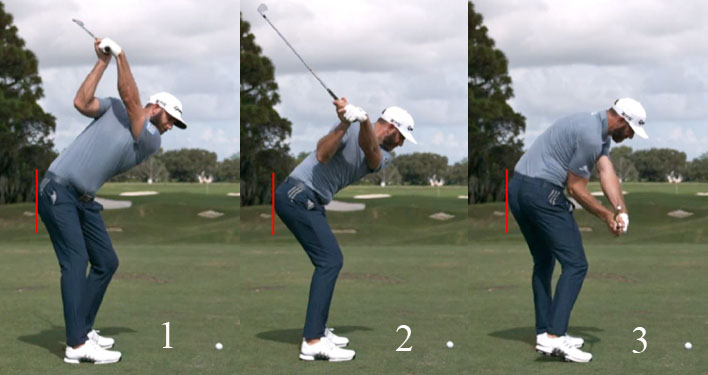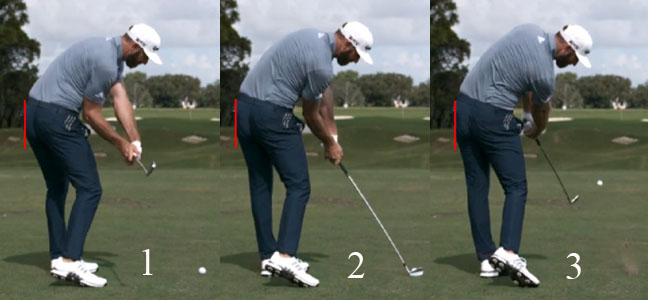I agree with Greg Rose on the importance of ankle dorsiflexion ROM. This is one valuable insight from their testing protocols. I think most of their tests are like Adam’s protocols, with too much bias trying to justify their testing protocols, or that somehow knowing one’s test results will lead to improvements swing mechanics.
I believe in exercise and functional fitness. This is what golfers need to focus on. Proper daily exercise, muscle activation, movement therapy, etc., is what matters, not knowing about test results, unless the results somehow motivate a person to do the exercise. But usually, golfers get lost between testing and golf play. They get tested and then don’t do much about it, since exercise takes effort, additional education, and extra time. So, I think testing is a waste in most cases.
In any event, a golfer must have normal ankle dorsiflexion ROM or there will be golf swing mechanic issues. Normal ankle dorsiflexion ROM is also essential during a body weight squat. Without it, the person can’t do a proper hip hinge since forward tibia motion is limited. The tibia must have enough forward motion, which is defined as ankle dorsiflexion, for a person to do a proper squat. If not, the person will try but will lose their balance, compensate by lifting their heels, or fake it in some other way.
Here's an abstract from PubMed:
Ankle joint dorsiflexion. Establishment of a normal range
B D Baggett 1 , G Young
Abstract
Various values have been proposed as the required amount of ankle joint dorsiflexion, but a normal range has not been established. The authors establish a normal range based on direct measurements and compare the standard nonweightbearing method of measuring ankle joint dorsiflexion with a weightbearing method. The normal range for ankle joint dorsiflexion was established as 0 degrees to 16.5 degrees nonweightbearing and 7.1 degrees to 34.7 degrees weightbearing. A statistically significant (p < 0.01) difference exists between the two measuring systems. In addition, the study shows poor correlation between the two measurements. This lack of correlation brings into question the clinical relevance of the standard nonweightbearing measurement.
In the golf swing, the squat move requires the same degree of normal ankle dorsiflexion ROM. And to compensate the person will usually stand up, early extend, rather than do the squat move. Hitting the ball off the toes accomplishes the same thing. Knowing this, a golfer needs to do much more physically activity and work specifically on improving ankle stability and mobility. Trying to change a golfer with stock swing tips will never solve his or her early extension problems when ankle dorsiflexion ROM is compromised.
Another recent video suggests that too much anterior pelvic tilt (sticking the butt out too much) at address also causes downswing early extension. But it’s important to remember that too much APT causes too much lumbar spine extension (lordosis). When the joints are taken to an extreme end-range at address, they will tend to move more to a neutral position during the golf swing. This amounts to early extension as the body seeks to move toward lumbar flexion and away from the APT. But, in this case, I think it will manifest itself during the backswing, not downswing.
However, I don’t necessarily agree that golfers need to start with a flexed lumbar (rounded) spine and a posterior pelvic tilt (belt level with the ground) at address. This is also an extreme joint position (or should be) and the person will simply move more toward lordosis or APT in the backswing, to get back to neutral. It likely doesn’t help much and is erased soon in the backswing.
We know the pelvis should move from a slight APT to a PPT in the downswing and follow-though. The key is not to do it early, not until after p5.5, otherwise it’s what we call downswing early extension.
The key is to start in neutral joint ROM zones (no extremes) at address and have normal joint ROMs being expressed throughout the entire golf swing. Both are essential.
Here Is another Milo channel video that discusses early extension. I agree with his first statement that early extension is usually caused by something else, and the root cause needs to be identified. However, I don’t agree with his reasoning for why it’s happening in this case. I don’t think it’s because of a face issue or a path issue, per se. I think this golfer is fit and has normal joint ROM. Mainly, though, I believe he was simply suffering from the hitter’s impulse thinking that a pelvic thrust and active wrist release was a good thing. Unlike the unfit golfer, he simply needed instruction on how to stop this. I like the deeper turn on his backswing. The slow-motion drill is also excellent combining a deep backswing pelvic turn along with the added hip hinge on the initial downswing. So, I think 95% of this video is spot-on. The golfer has the physical ability to do it right and what Milo taught him was helpful.
UG



